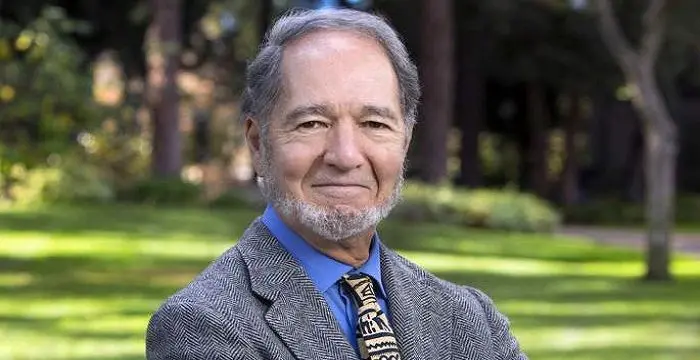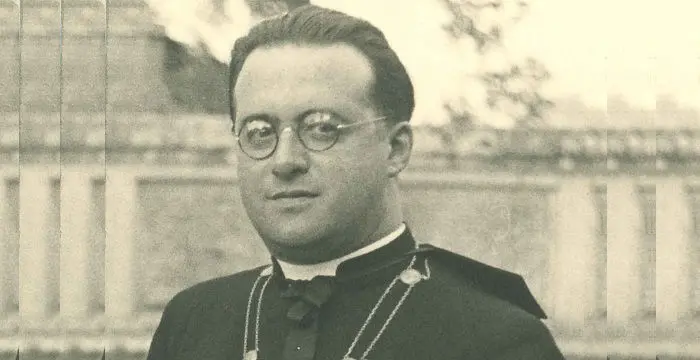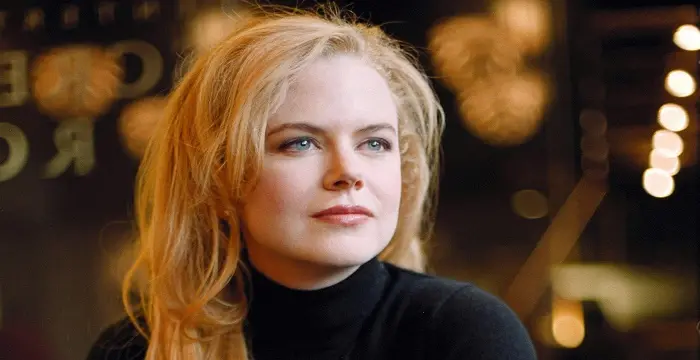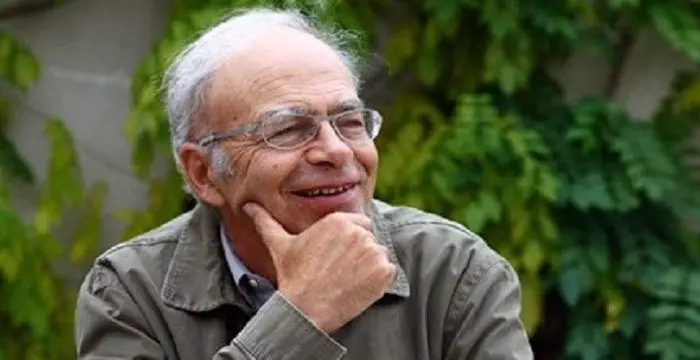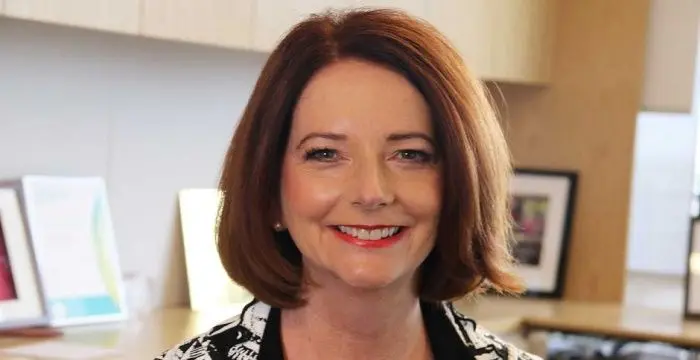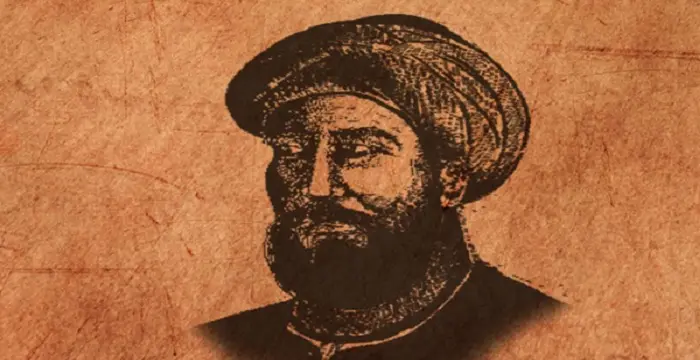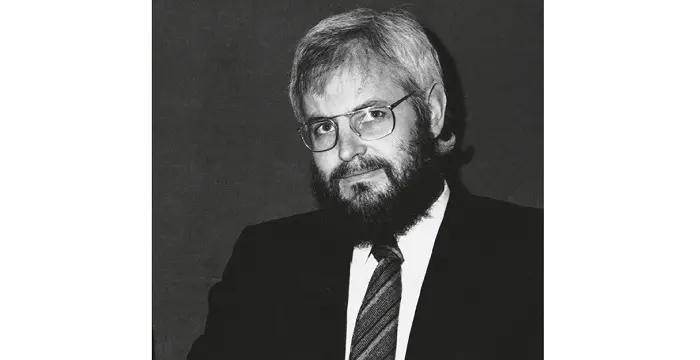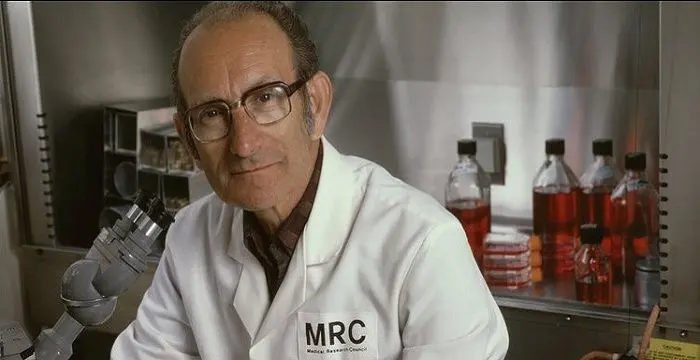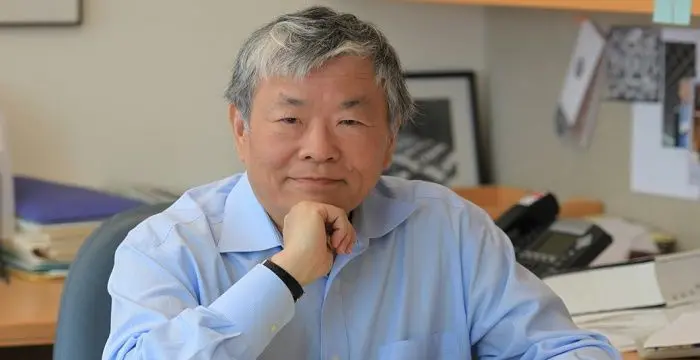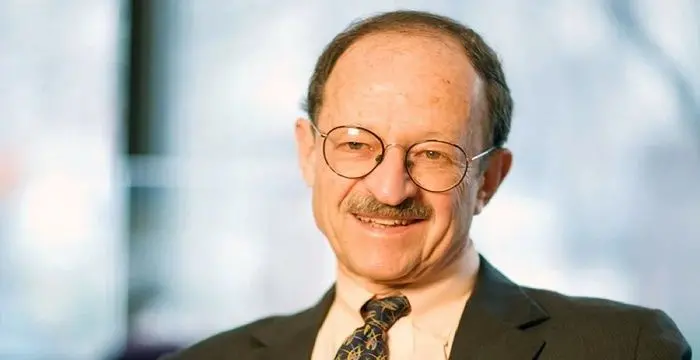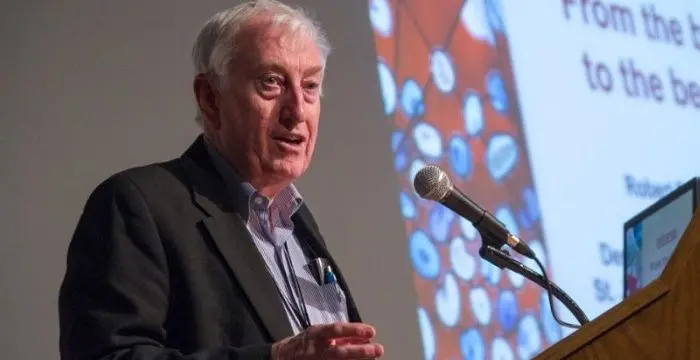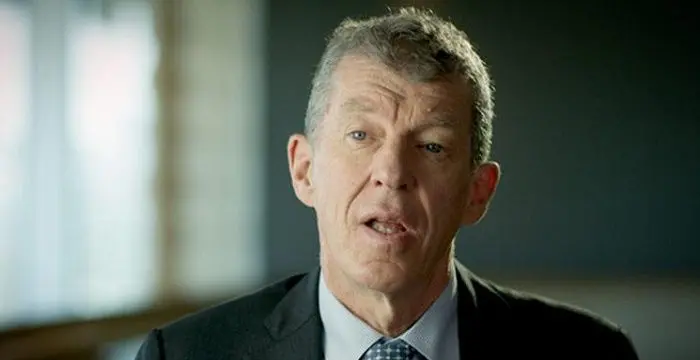
Ian Frazer - Scientists, Life Achievements and Family
Ian Frazer's Personal Details
Ian Frazer is a Scottish-born Australian scientist whose research gave the world the first vaccine against HPV causing cervical cancer
| Information | Detail |
|---|---|
| Birthday | January 6, 1953 |
| Nationality | Australian |
| Famous | University Of Melbourne, Physicians, Immunologists, Scientists |
| Spouses | Caroline |
| Known as | Ian Hector Frazer |
| Universities |
|
| Notable Alumnis |
|
| Discoveries / Inventions |
|
| Birth Place | Glasgow, Scotland |
| Gender | Male |
| Sun Sign | Capricorn |
| Born in | Glasgow, Scotland |
| Famous as | Australian scientist |
// Famous Scientists
Jared Diamond
Jared Mason Diamond is an American scientist and author reputed for his highly acclaimed and popular science books.
Georges Lemaître
Georges Lemaitre was a Belgian scientist and priest. This biography of Georges Lemaitre profiles his childhood, life, career, achievements and timeline.
Joseph Lister
Joseph Lister was a British surgeon who was the founder of antiseptic medicine. This biography of Joseph Lister provides detailed information about his childhood, life, achievements, works & timeline.
Ian Frazer's photo
Who is Ian Frazer?
A Scottish-born Australian scientist, Ian Frazer is one of the most recognized names in the field of immunology. His eminent service in medical investigation is noteworthy for it was his research that led to the development of a vaccine against human papillomavirus (HPV) that causes most cervical cancers. From an early age, Frazer was determined to pursue a career in research. Thus, after obtaining a degree in medicine and surgery from University of Edinburgh, he started training himself as a renal physician, investigating the immunological issues associated with transplantation. It was his growing interest in immunology that took him to Australia where he enrolled at the Walter and Eliza Hall Institute and the rest as they say is history. After years of research, he, along with his colleagues, came to the conclusion that there is a connection between HPV and cervical cancer. He also determined that the immune system played a dominant role in the ability to protect against HPV-linked cancer. Presently, Frazer holds the seat of the director of various organizations and institutes aimed at researching immunoregulation and immunotherapeutic vaccines.
// Famous University Of Melbourne
Nicole Kidman
Nicole Kidman is one of the most talented actors that the Hollywood film industry can boast of. Browse through this biography to get detailed information regarding her life, childhood, profile & timeline
Peter Singer
Peter Singer is an Australian moral philosopher who has challenged traditional notions of applied ethics throughout his philosophical and literary career. Check out this biography to get detailed information on his life.
Julia Gillard
Julia Gillard is a former Prime Minister of Australia and the first woman to hold the position. To know more about her childhood, career, profile and timeline read on
Childhood & Early Life
Ian Frazer was born on January 6, 1953 in Glasglow, Scotland to medical scientist parents. His parents’ profession had a deep influence on the mind of young Frazer who aspired to become a scientist himself.
Young Frazer attained his preliminary education from Aberdeen private school after which he studied at the Robert Gordon’s College. At both the institutions, he excelled in science which determined the future course of his life.
He joined the University of Edinburgh and completed his obtained Bachelor of Science in 1974 and M.B.B.S. in 1977.
Career
From 1978–1979, he worked at the Edinburgh Eastern General Hospital, the Edinburgh Royal Infirmary and the Roodlands General Hospital in Haddington, receiving training as a renal physician and clinical immunologist. He investigated the immunological issues associated with transplantation.
It was due to his growing interest in viral immunology that Ian Mackay brought him to Melbourne in 1980. At Melbourne, he researched on viral immunology at the Walter and Eliza Hall Institute of Medical Research
He spent much of the early 1980s conducting research on hepatitis B virus at the Walter and Eliza Hall Institute. To zero in on his findings, he studied a group of homosexual men, as they were usually prone to a high risk of chronic Hepatitis B.
From his study of homosexual men, he discovered that the immune system of a significant number of patients were unable to clear Hepatitis B infection. In 1981, he discovered that similar cases of immunodeficiency afflicting homosexuals were found in gay men around the world.
Suspecting a viral origin, he along with his colleagues tested the immune-impaired unit for a variety of viruses that were known to cause immune problems. It was after much finding that he discovered that the then recently identified virus, HTLV-III, later known as HIV was a cause.
It was due to his work that scientists confirmed that HIV was the cause for Acquired Immune Deficiency Syndrome or AIDS. Furthermore, he discovered that AIDS patient had difficulty with genital warts caused by the Human Pappilloma Virus (HPV), which in turn were inducing precancerous cells.
He believed that the immune system played a vital role in protecting against HPV linked cancer. Through his research he confirmed that immunosuppressed patients couldn’t clear the virus which resulted in uncontrolled HPV infection, causing cancer.
In 1985, he moved to the University of Queensland where he took up the post of a Senior Lecturer and Director of Immunology at the Princess Alexandra Hospital. It was there that he conducted research on HPV in men, thus contributing in the HIV research. In 1988, he was offered Doctor of Medicine qualification.
Eventually, he founded and became the director of the Queensland Centre for Immunology and Cancer Research. He was amongst the first scientists who studied the link between HPV and cervical cancer.
He devised that cervical cancer was caused due to sexual transmission of infected cells in the cervix which when persisted could cause cancerous growth within the outer end of the uterus thus causing cervical cancer
It was while on a sabbatical to Cambridge University in UK that he first met Dr Jian Zhou, who much like him was also interested in HPV. Together the two researched on HPV and came out with ground-breaking discovery.
Using molecular biology, they synthesized particles to mimic the shape of the virus. They were aware of the fact that similar shaped virus would help in triggering an immune response against HPV. In March 1991, they assembled two proteins into a virus-like particle which resembled the HPV shell. The result of the discovery was the Gardasil vaccine which was developed.
Following three years of designing, in 1998 the first human trials for Gardasil wERE conducted. Following this, he took up the position of a professor in the university’s department of medicine.
The clinical trials of Gardasil confirmed that the vaccine was highly effective in protecting women against infections by two strains of HPV that caused 70 per cent of cervical cancers and two strains that caused 90 per cent of genital warts.
Watching the benefits of vaccine in women and men across the globe, he worked with several organizations to make the vaccine available to developed and less-developed countries of the world. Today the vaccine is in use in more than 120 countries of the world.
Currently, he teaches immunology to undergraduates and graduate students at the University of Queensland. He serves as Cancer Council Australia president and is the Chairman of the ACRF's Medical Research Advisory Committee. Furthermore, he also advises the WHO and the Gates Foundation on papillomavirus vaccines.
In the field of research, he serves as the CEO and Director of Research at the Translational Research Institute. Furthermore, he is currently researching on immunoregulation and immunotherapeutic vaccines and VLP-based vaccine against hepatitis C.
In 2014, his vaccine against genital herpes stormed the news as it is believed to have passed the human safety trials on 20 Australians. If the reports are to be believed the vaccine would help prevent the infection and help in fighting against the disease in existing patients.
He is also said to be working on vaccinations for dengue fever. If the nature of his progress is to be believed, it is expected that HIV vaccines should be available by 2028 and vaccine for skin cancer caused by HPV by 2020.
Awards & Achievements
Over the years, he has been bestowed with numerous awards including the Australian Biotechnology Award in 1999, Business/Higher Education Round Table award for Collaborative Research 1999, Centenary Medal for services to cancer research in 2003, John Curtin Medal and CSIRO Eureka Prize for Leadership in Science in 2005.
In recognition of his work on the HPV vaccine, he was named Australian of the Year in 2006. Same year, he received the Distinguished Fellowship Award from Royal College of Pathologists
In 2007, he was conferred with various awards including Novartis Prize for Clinical Immunology, Golden Plate recipient at International Achievement Summit, International Life Award for Scientific Research, Merck Sharp & Dohme Howard Florey Medal and Clunies Ross Award.
In 2008, he received the Balzan Prize for Preventive Medicine and American Academy of Dermatology Lila Gruber Award for Dermatology. Furthermore, he received the Prime Minister’s Prize for Science.
In 2009, the Australian Medical Association awarded him with a Gold Medal.
In 2011, he was elected as a Fellow of the Royal Society. Additionally, he holds fellowship of important organization including Royal College of Physicians of Edinburgh, Royal College of Pathologists of Australasia, Australian Institute of Company Directors, Australian Academy of Technological Sciences and Engineering and Australian Academy of Science.
In 2012, he was named as a National Living Treasure by the National Trust of Australia (NSW). Same year, he was honoured with the title of Companion of the Order of Australia (AC) for his service in medical research.
Personal Life & Legacy
In 1976, he first met his future wife-to-be Caroline whom he married the same year. The couple has been blessed with three children, out of which two are doctors and the third a veterinarian studying medicine.
// Famous Physicians
Al-Zahrawi
Al-Zahrawi, was an illustrious medieval Arab Muslim physician and surgeon. Check out this biography to know about his childhood, family life, achievements and interesting facts about him.
Jabir Ibn Hayyan
Jabir Ibn Hayyan was a medieval era polymath. Check out this biography to know about his life, works and achievements.
Maria Montessori
Maria Montessori was a physician and educator who developed the approach of Montessori education. This biography of Maria Montessori provides detailed information about her childhood, life, achievements, works & timeline.
Ian Frazer's awards
| Year | Name | Award |
|---|---|---|
Other | ||
| 0 | Australian of the Year (2006) | |
| 0 | Prime Minister's Prize for Science (2008) | |
| 0 | Australian Living Treasure (2012) | |
| 0 | Companion of the Order of Australia (2012) | |
Ian Frazer biography timelines
- // 6th Jan 1953Ian Frazer was born on January 6, 1953 in Glasglow, Scotland to medical scientist parents. His parents’ profession had a deep influence on the mind of young Frazer who aspired to become a scientist himself.
- // 1976In 1976, he first met his future wife-to-be Caroline whom he married the same year. The couple has been blessed with three children, out of which two are doctors and the third a veterinarian studying medicine.
- // 1977He joined the University of Edinburgh and completed his obtained Bachelor of Science in 1974 and M.B.B.S. in 1977.
- // 1978 To 1979From 1978–1979, he worked at the Edinburgh Eastern General Hospital, the Edinburgh Royal Infirmary and the Roodlands General Hospital in Haddington, receiving training as a renal physician and clinical immunologist. He investigated the immunological issues associated with transplantation.
- // 1980It was due to his growing interest in viral immunology that Ian Mackay brought him to Melbourne in 1980. At Melbourne, he researched on viral immunology at the Walter and Eliza Hall Institute of Medical Research
- // 1981From his study of homosexual men, he discovered that the immune system of a significant number of patients were unable to clear Hepatitis B infection. In 1981, he discovered that similar cases of immunodeficiency afflicting homosexuals were found in gay men around the world.
- // 1985In 1985, he moved to the University of Queensland where he took up the post of a Senior Lecturer and Director of Immunology at the Princess Alexandra Hospital. It was there that he conducted research on HPV in men, thus contributing in the HIV research. In 1988, he was offered Doctor of Medicine qualification.
- // 1991Using molecular biology, they synthesized particles to mimic the shape of the virus. They were aware of the fact that similar shaped virus would help in triggering an immune response against HPV. In March 1991, they assembled two proteins into a virus-like particle which resembled the HPV shell. The result of the discovery was the Gardasil vaccine which was developed.
- // 1998Following three years of designing, in 1998 the first human trials for Gardasil wERE conducted. Following this, he took up the position of a professor in the university’s department of medicine.
- // 2006In recognition of his work on the HPV vaccine, he was named Australian of the Year in 2006. Same year, he received the Distinguished Fellowship Award from Royal College of Pathologists
- // 2007In 2007, he was conferred with various awards including Novartis Prize for Clinical Immunology, Golden Plate recipient at International Achievement Summit, International Life Award for Scientific Research, Merck Sharp & Dohme Howard Florey Medal and Clunies Ross Award.
- // 2008In 2008, he received the Balzan Prize for Preventive Medicine and American Academy of Dermatology Lila Gruber Award for Dermatology. Furthermore, he received the Prime Minister’s Prize for Science.
- // 2009In 2009, the Australian Medical Association awarded him with a Gold Medal.
- // 2011In 2011, he was elected as a Fellow of the Royal Society. Additionally, he holds fellowship of important organization including Royal College of Physicians of Edinburgh, Royal College of Pathologists of Australasia, Australian Institute of Company Directors, Australian Academy of Technological Sciences and Engineering and Australian Academy of Science.
- // 2012In 2012, he was named as a National Living Treasure by the National Trust of Australia (NSW). Same year, he was honoured with the title of Companion of the Order of Australia (AC) for his service in medical research.
- // 2014In 2014, his vaccine against genital herpes stormed the news as it is believed to have passed the human safety trials on 20 Australians. If the reports are to be believed the vaccine would help prevent the infection and help in fighting against the disease in existing patients.
// Famous Immunologists
Georges J. F. Kohler
Georges J. F. Kohler was a German immunologist who received the Nobel Prize in Physiology or Medicine in 1984. Check this biography to get details about his life, profile and timeline.
Cesar Milstein
Cesar Milstein was an Argentinian biochemist who received the Nobel Prize for his discovery of monoclonal antibody. Explore this biography to get details about his life, career and scientific discoveries.
Susumu Tonegawa
Susumu Tonegawa is a Japanese molecular biologist who was awarded the Nobel Prize for Physiology or Medicine in 1987. This biography of Susumu Tonegawa provides detailed information about his childhood, life, achievements, works & timeline.
Harold E. Varmus
Harold E. Varmus is an American scientist who won a share of the 1989 Nobel Prize in Physiology or Medicine. This biography of Harold E. Varmus provides detailed information about his childhood, life, achievements, works & timeline.
Peter C. Doherty
Peter C Doherty is a renowned Australian scientist circle, who was received the Nobel Prize in Physiology for the discovery of how immune system recognizes virus-infected cells. Read this biography to know in details about his childhood, life, career
Baruj Benacerraf
Baruj Benacerraf was a Venezuelan-born American immunologist who was one of the co-recipients of the 1980 Nobel Prize in Physiology or Medicine. Check out this biography to know about his childhood, life, achievements, works & timeline.
Ian Frazer's FAQ
What is Ian Frazer birthday?
Ian Frazer was born at 1953-01-06
Where is Ian Frazer's birth place?
Ian Frazer was born in Glasgow, Scotland
What is Ian Frazer nationalities?
Ian Frazer's nationalities is Australian
Who is Ian Frazer spouses?
Ian Frazer's spouses is Caroline
What was Ian Frazer universities?
Ian Frazer studied at University Of Melbourne, B.Sc., M.B.B.S, M.D.
What was Ian Frazer notable alumnis?
Ian Frazer's notable alumnis is University Of Melbourne
What is Ian Frazer's inventions/discoveries?
HPV Vaccine Creation was invented (or discovered) by Ian Frazer
What is Ian Frazer's sun sign?
Ian Frazer is Capricorn
How famous is Ian Frazer?
Ian Frazer is famouse as Australian scientist
